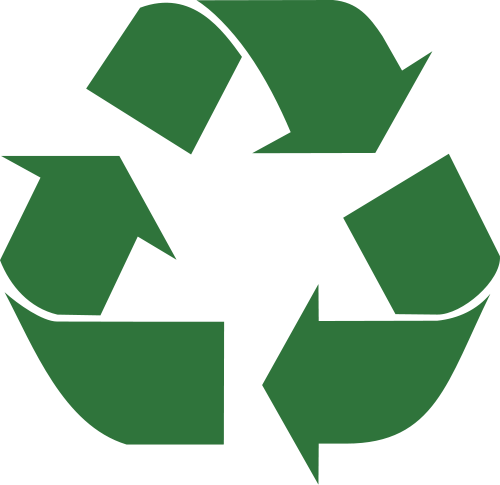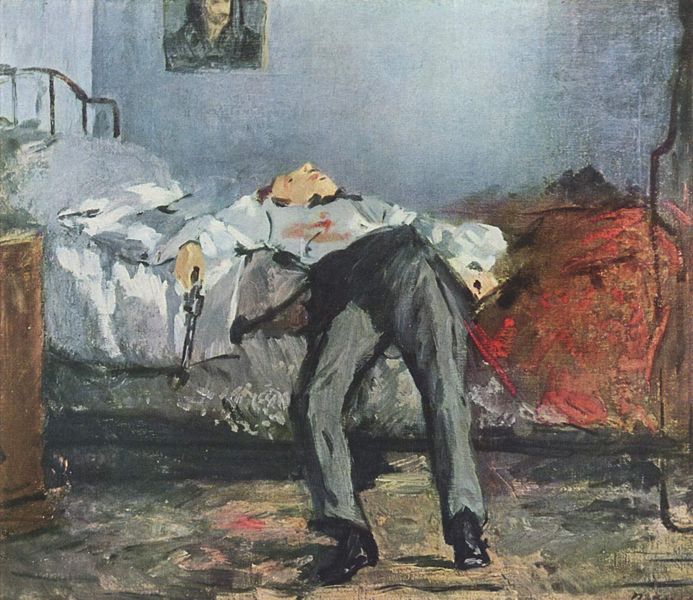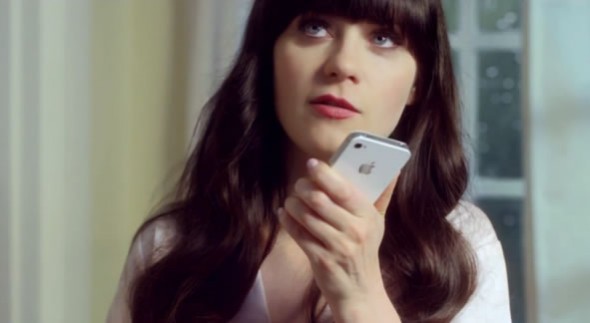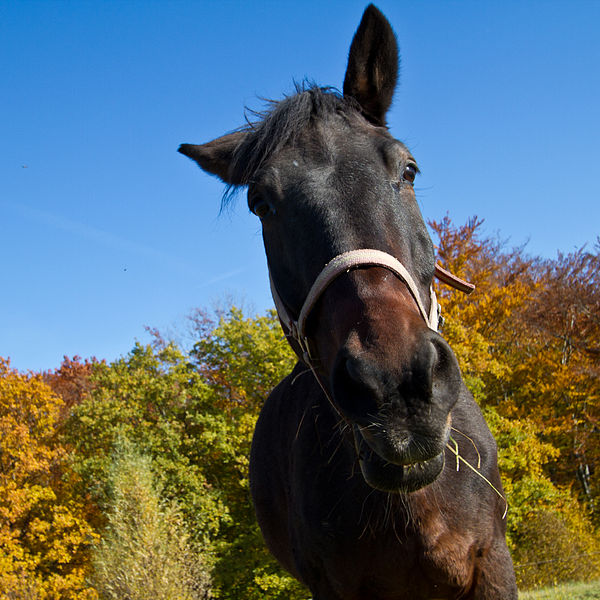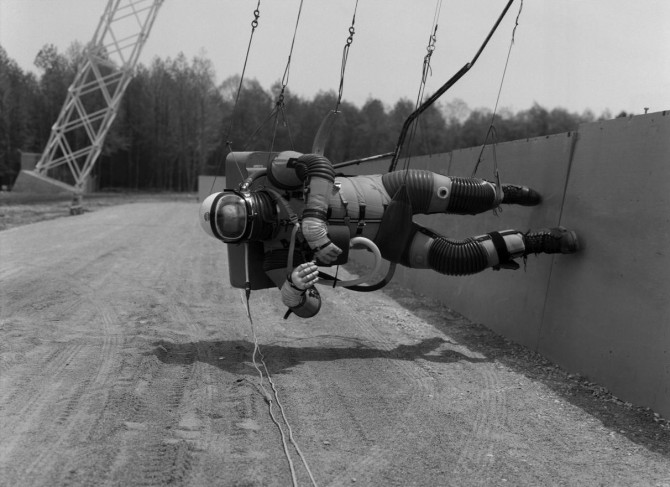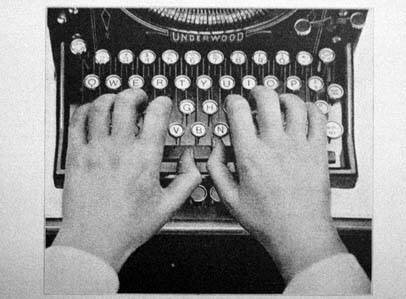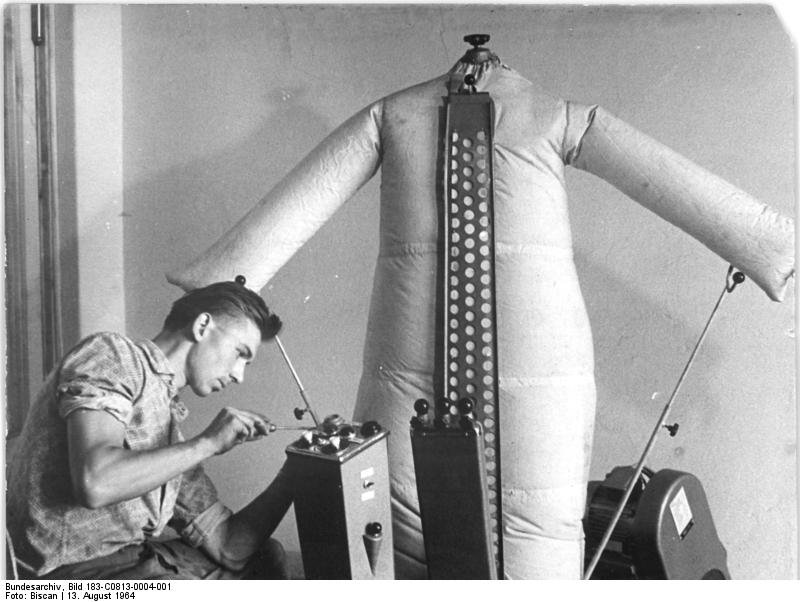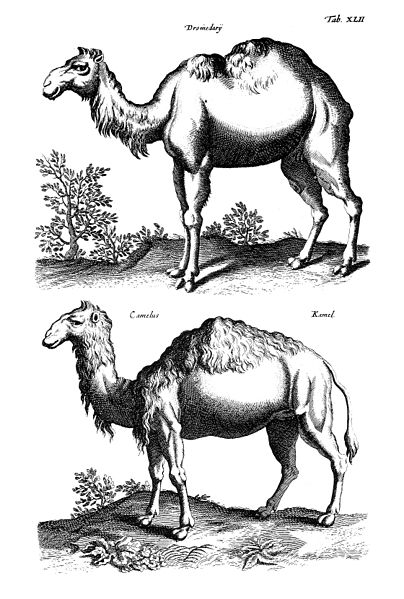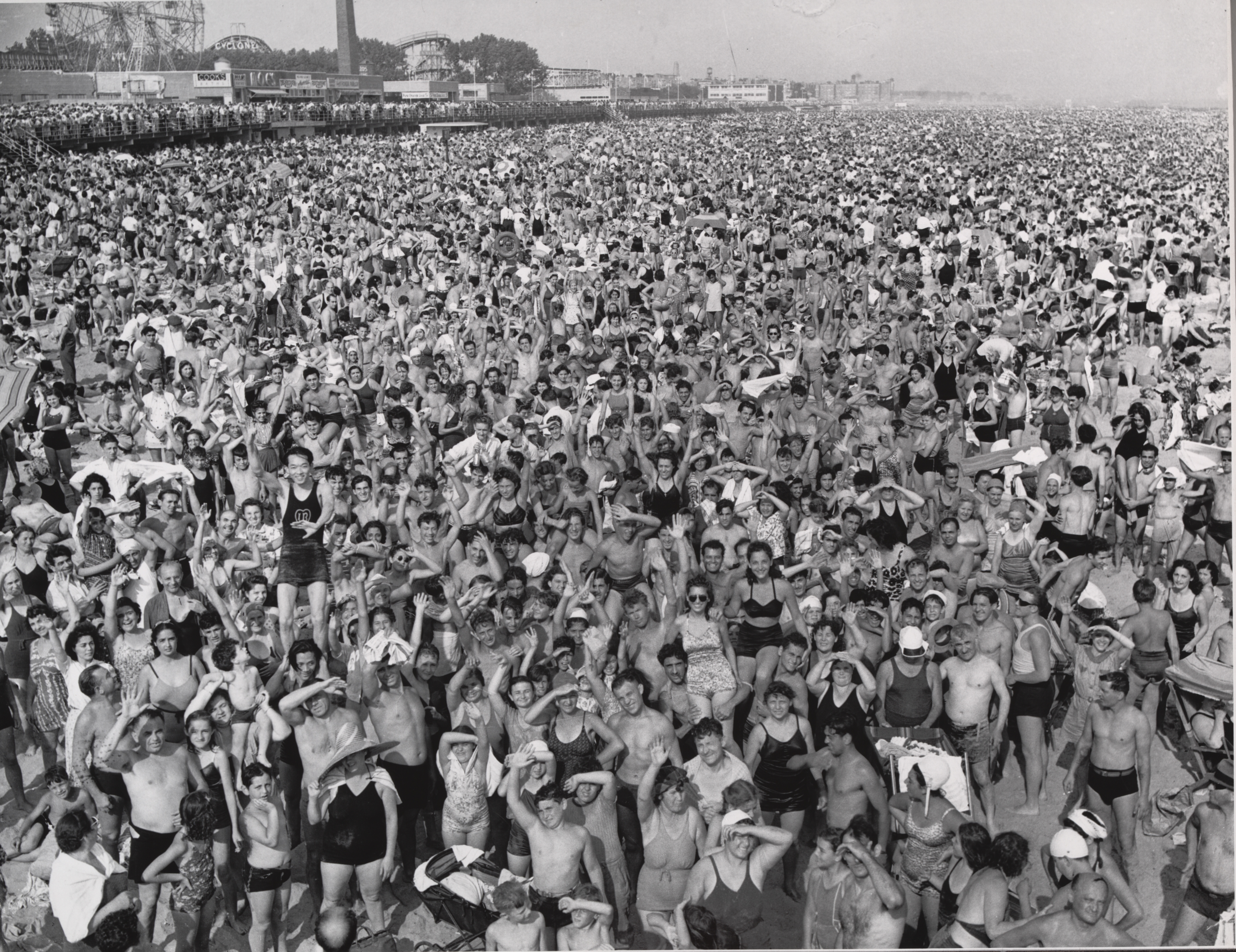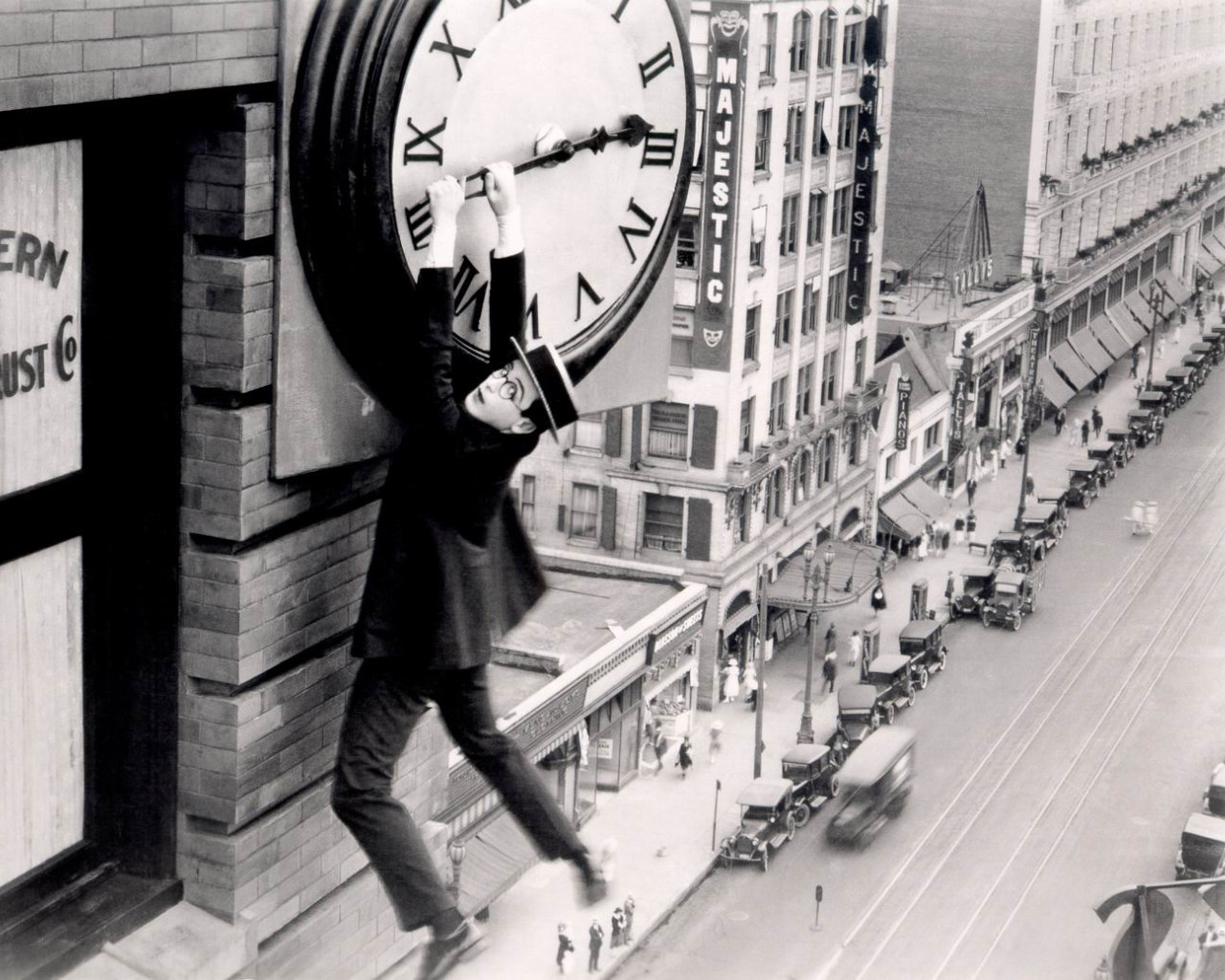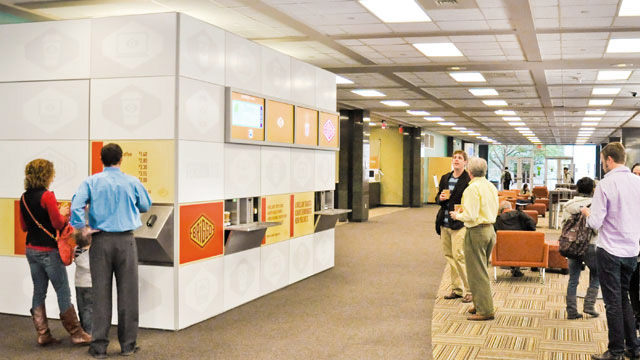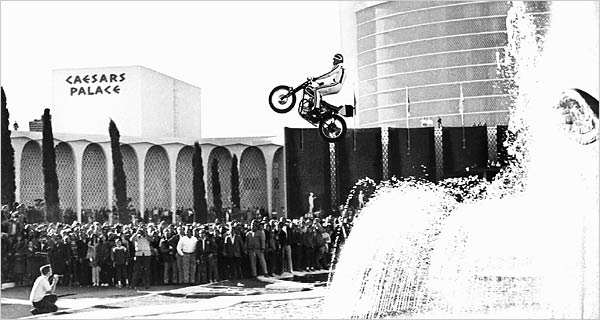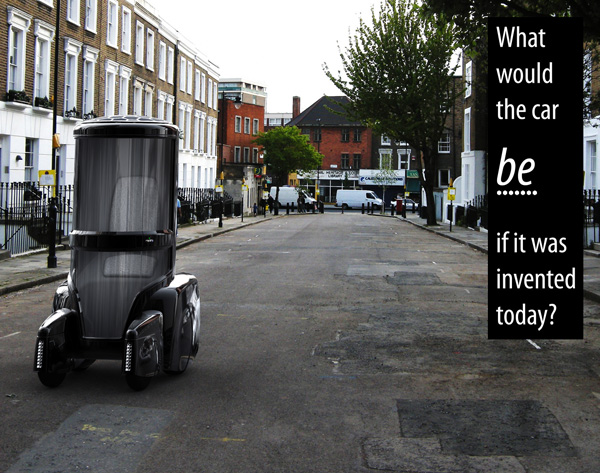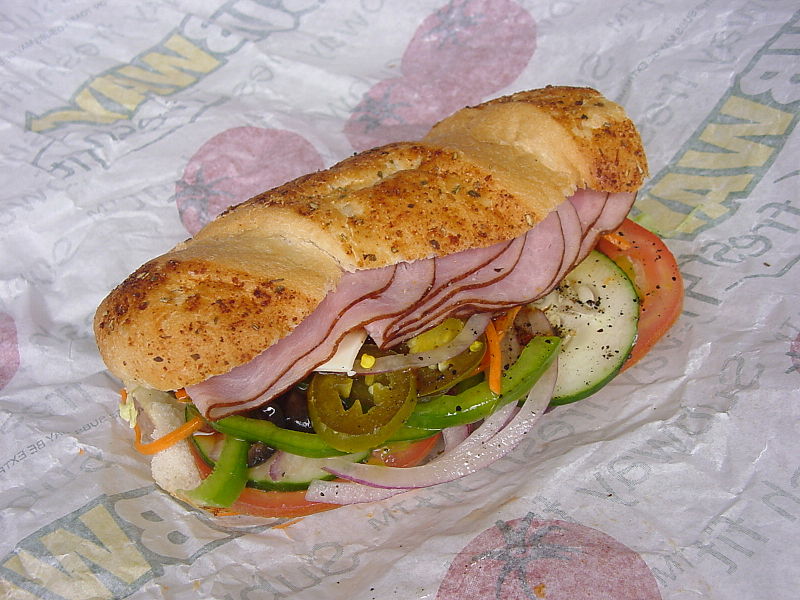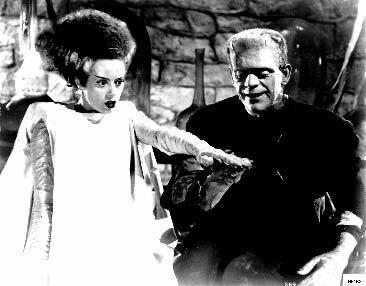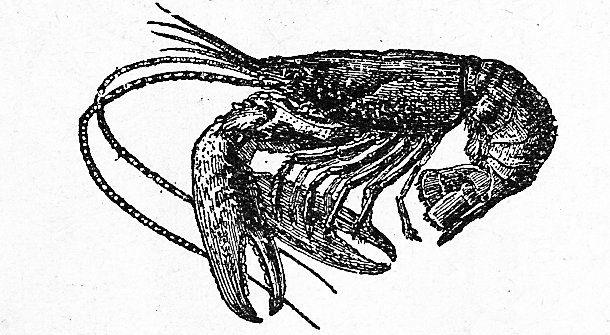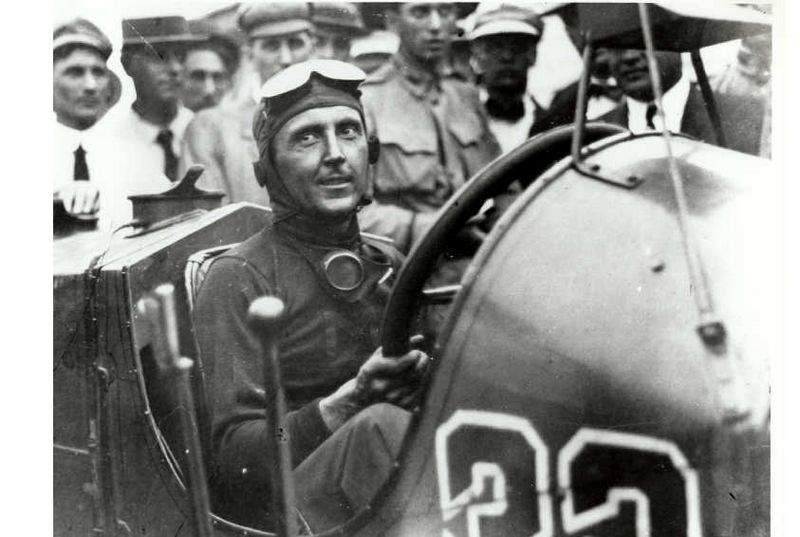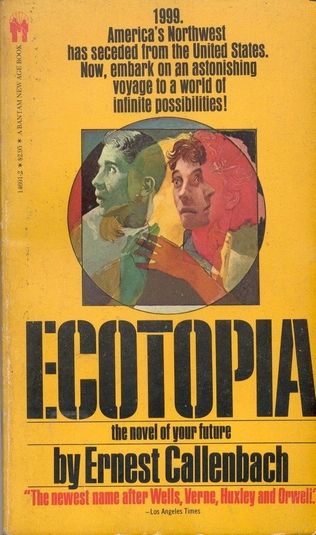Japan’s JR-Maglev is the fastest commuter train in the world. It uses a magnetic levitation system to clock in at up to 361 mph.
Gary Anderson designed the ubiquitous recycling symbol while an architecture grad student in the 1970s in Southern California. It was not a long and torturous process. An excerpt from his story in a new Financial Times piece:
“I studied engineering at the University of Southern California at a time when there was a lot of emphasis in the US on training young people to be engineers. It was in the years after Sputnik and the philosophy was that America was in danger of falling behind the Russians in the technical arena. That said, I eventually switched to architecture. I just couldn’t get a grasp on electronics. Architecture was more tangible.
I got my bachelor’s degree in 1971 and stayed on to do a master’s. It was around that time that I saw a poster advertising a design competition being run by the Container Corporation of America. The idea was to create a symbol to represent recycled paper – one of my college requirements had been a graphic design course so I thought I’d give it a go.
It didn’t take me long to come up with my design: a day or two. I almost hate to admit that now. But I’d already done a presentation on recycling waste water and I’d come up with a graphic that described the flow of water: from reservoirs through to consumption, so I already had arrows and arcs and angles in my mind.”
Tags: Gary Anderson
From the May 6, 1888 edition of the Brooklyn Daily Eagle:
“Cincinnati, Oh.–George Hummel, a baker living at 104 Mound Street, made desperate by financial difficulties, shot himself through the body last night in his bedroom. After a surgeon had dressed his wounds, a Newfoundland dog pushed his way into the bedroom and mounted guard over his master. No one dared enter until this morning, when Mrs. Hummel made the venture. The dog sprang upon her and lacerated her arm. A police officer was called in and he shot the dog. Mr. Hummel’s wound is dangerous.”
Tags: George Hummel, Mrs. Hummel
Many of you have eaten dog and horse.
Probably rat, too, if you went to school on west Long Island in the 70’s and 80’s and bought school lunches.
Oh yeah. You’ve eaten those animals.
It wasn’t her most unusual assignment, but Oriana Fallaci spent a year focused on NASA in the mid-60s when the space race was in high gear. The result was If the Sun Dies, a book-length mélange of reportage and personal impressions about humans hurtling into the future. Fallaci was known for her ferocious Q&A interviews, but she was also a brilliant prose writer. A bigoted ass at times, but really brilliant. Here are the first three paragraphs from her book about life among the boldest rocketeers the world has ever known, in which she travels to Los Angeles to do research and finds the city to be odd and denatured:
“You couldn’t see the stone, so thick and lush was the grass. I tripped over it and fell flat, alongside the road. Nobody came to help me. But then who could? There was nobody walking along the road, nobody along the roads of the whole city. Nobody existed, nobody with feet and legs, with a body on his legs, a head on his body. Only automobiles existed, sliding by, smooth, controlled, always at the same speed, at the same distance, never a man inside, nor a woman. There were human forms behind the steering wheels, yes, but so straight they were, and still, that they could not be men or women; they were automatons, robots. Isn’t modern technology perfectly able to make robots identical to ourselves? Isn’t the first rule for robots ‘remember that you must not interfere with the actions of humans unless they ask you to’? And was I asking anyone to intervene? On the contrary. Stretched out on the grass by the roadside, my cheeks burning with embarrassment, I was only hoping that they wouldn’t notice me and laugh at me. And the robots obeyed, sliding by, smooth and controlled, always at the same speed, at the same distance, not even asking their computers whether the woman lying there was dead or alive and if she was alive why she wasn’t getting up. I wasn’t getting up because I had noticed something absurd. The grass didn’t smell like grass.
 I stuck my nose into it and sniffed. No, it didn’t smell like grass, it had no smell at all. I grasped a blade and tugged. No, it didn’t come out and it didn’t break. I scrabbled underneath with my fingernail, looking for a speck of earth. No, you couldn’t even get hold of a speck of earth. How odd. Yes, it was the color of earth, it had the consistency of earth. And the grass that was planted in it was the same color as grass, it had the consistency of supple fresh grass, even watered with an ingenious sprinkler system to keep it green and make it grow; my God, I couldn’t be delirious, dreaming, the grass was grass, yes, of course it…Was it grass? I sniffed it again. Again I grasped a blade between my thumb and forefinger and tugged. Again I scrabbled underneath with my fingernail, looking for a speck of earth, and like a dagger-thrust in my brain the doubt became certainty. The grass was plastic. Yes, and perhaps all the grass I’d seen there, the grass plots along the avenues, along the highways, in front of the houses, the churches, the schools, looked after by gardeners, watered, treated like real grass, grass that grows and dies, was all plastic. A huge shroud of plastic, of grass that never grows or dies, a mockery.
I stuck my nose into it and sniffed. No, it didn’t smell like grass, it had no smell at all. I grasped a blade and tugged. No, it didn’t come out and it didn’t break. I scrabbled underneath with my fingernail, looking for a speck of earth. No, you couldn’t even get hold of a speck of earth. How odd. Yes, it was the color of earth, it had the consistency of earth. And the grass that was planted in it was the same color as grass, it had the consistency of supple fresh grass, even watered with an ingenious sprinkler system to keep it green and make it grow; my God, I couldn’t be delirious, dreaming, the grass was grass, yes, of course it…Was it grass? I sniffed it again. Again I grasped a blade between my thumb and forefinger and tugged. Again I scrabbled underneath with my fingernail, looking for a speck of earth, and like a dagger-thrust in my brain the doubt became certainty. The grass was plastic. Yes, and perhaps all the grass I’d seen there, the grass plots along the avenues, along the highways, in front of the houses, the churches, the schools, looked after by gardeners, watered, treated like real grass, grass that grows and dies, was all plastic. A huge shroud of plastic, of grass that never grows or dies, a mockery.
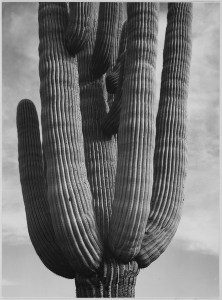 I jumped up as if I’d been stung by a thousand wasps, hurried back to my hotel, flung open my door of my suite and almost fell over the cactus plant that adorned the living room. It was a big cactus, green, lush, bristling with thorns, and on top there was a flower. I felt the flower, I bent it and twisted it. It remained intact. I poked my finger between the thorns, squeezed the fleshy part, hoping for a drop of liquid. I felt only the sponginess of rubber. I squeezed the thorns with both hands, desperately praying that they would prick me, that they would tell me I’d made a mistake. They only tickled me gently, the thorns were made of aluminum and rounded points. And the plant in the corridor? False, too. And the hedge in the garden? False of course. And probably those trees too around which there were never any flies or birds, every blade of grass, every branch, every leaf was false in this city where nothing green sprouted and grew and died. The daisies, the azaleas, the rhododendrons, the rose in that vase…The vase was on the TV and I approached it without hope. I gently removed a rose, raised it to my face, let it drop, and the rose went crack; it shattered on the floor in a thousand splinters of glass. On the floor a cold frost, a spark of light remained. I had reached Los Angeles, first stage of my journey into the future and into myself.”
I jumped up as if I’d been stung by a thousand wasps, hurried back to my hotel, flung open my door of my suite and almost fell over the cactus plant that adorned the living room. It was a big cactus, green, lush, bristling with thorns, and on top there was a flower. I felt the flower, I bent it and twisted it. It remained intact. I poked my finger between the thorns, squeezed the fleshy part, hoping for a drop of liquid. I felt only the sponginess of rubber. I squeezed the thorns with both hands, desperately praying that they would prick me, that they would tell me I’d made a mistake. They only tickled me gently, the thorns were made of aluminum and rounded points. And the plant in the corridor? False, too. And the hedge in the garden? False of course. And probably those trees too around which there were never any flies or birds, every blade of grass, every branch, every leaf was false in this city where nothing green sprouted and grew and died. The daisies, the azaleas, the rhododendrons, the rose in that vase…The vase was on the TV and I approached it without hope. I gently removed a rose, raised it to my face, let it drop, and the rose went crack; it shattered on the floor in a thousand splinters of glass. On the floor a cold frost, a spark of light remained. I had reached Los Angeles, first stage of my journey into the future and into myself.”
Tags: Oriana Fallaci
Some search-engine keyphrases bringing traffic to Afflictor this week:

Afflictor: Looking forward to next week's Time magazine cover about gun control. (Image by François R. Cambuzat.)
- Recent Films Now on Home Video:
A Dangerous Method + General Orders No. 9.
- Old Print Article: Brooklyn clan plans to eat dead horse (1895) + Lousy pathologist thinks man had a camel liver (1898) + Girl runs away, follows circus (1894).
- Classic Photograph: Jess Dixon Floating, It Appears, In a Flying Car (1936).
- Featured Videos: Howard Cosell’s ABC comedy show promo (1975) + Carl Jung speaks in his last years (1959) + Michelangelo Antonioni looks at the future of technology (1982) + Christopher Hitchens eviscerates Mother Teresa (1994) + The 1911 Indy 500 winner appears on a game show (1961) + B.F. Skinner clarifies his child-rearing practices + Alan Abel pranks: Bureau of Sexological Investigation (1981), Tennis-playing sheik (1970s) + Phony Howard Hughes press conference (1972).
- Recently Posted on NYC’s Craigslist: You don’t want to know my dinner plans + I have failed so many drug tests + It’ll be like open-mike night in your living room.
- From Frankenstein to Facebook, we’ve used electricity to create friends.
- Starting in the ’80s, Americans were encouraged to relate to the wealthy.
- Turning people into abstractions can be very helpful or very hurtful.
- Robert Reich explains why socialism isn’t the answer to economic disparity.
- DARPA intends to implant microchips inside American soldiers.
- Charles Fishman thinks Las Vegas is the most water savvy area of the U.S.
- Paper books may exist in the future, but they will be different.
- Pegasus Worldwide plans to build an insta-ghost town in New Mexico.
- Lewis Mumford thought the invention of clocks made capitalism possible.
- Kevin Kelly explains how we can influence the character of technology.
- Ernest Callenbach wrote a 1975 novel that imagined a green, radical future.
- Human remains were used in medicine for centuries.
- Gambling on ponies in Hong Kong goes high-tech.
- Farhad Manjoo doesn’t know how Amazon will profit from Kindle Fire.
- Airplanes, like poetry, are beautiful and unprofitable.
- In addition to terrible food, McDonald’s now has its own TV channel.
- It would seem that jogging can extend the average lifespan.
- Retinal implants to cure blindness are now being used in earnest.
- Intelligent Networked Coffee Kiosks have robistas make your coffee.
- Greil Marcus recalls how he came to leave Rolling Stone.
- The Urban Flower was designed as if it was the first automobile ever.
- A brief note from 1897 about a big lobster.
- A brief note from 1895 about a man who took poison.
- This week’s Afflictor keyphrase searches.
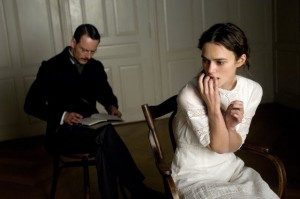 A Dangerous Method
A Dangerous Method
David Cronenberg’s telling of the uneasy birth of psychoanalysis is remarkably restrained, almost disappointingly so initially, with none of the physical manifestations of the monsters within us that are his trademark. What better opportunity for his insane visions than material about repressed feelings waiting to burst free? But the director knows best, allowing his actors and the Christopher Hampton screenplay to simmer and boil in a naturalistic way.
The film focuses on fin de siècle Europe as Carl Jung (Michael Fassbender) is becoming nearly as famous as his elder, Sigmund Freud (Viggo Mortensen). The two have a respectful father-and-son relationship, even though they get on each other’s nerves. At this point in his life, Freud doesn’t believe that a cigar is ever just a cigar, seeing sex as the motivation for everything, which irks his colleague. Jung has a weakness for telepathy and other such humbug, which Freud cannot fathom. But they remain on good terms, with Freud hopeful that his work will continue through Jung.
Into their lives comes Sabina Spielrein (Keira Knightley), an aspiring doctor and a patient of Jung’s who has been driven completely mad by her obsession with being humiliated. Jung helps her become functional again, but the married doctor crosses ethical boundaries by entering into a sado-masochistic sexual relationship with his patient. A controlling father, a rebellious son, a brilliant madwoman, an illicit relationship–as any analyst could tell you, things are bound to go horribly wrong.
On a voyage to America, Freud dryly remarks to his shipmate Jung that they are bringing “the plague” with them. But what they are doing, of course, is trying to end to a mass sickness–one of silence, secrecy and repression. But such a process is bound to be messy, not only for the film’s three principals but for all of mankind. Nothing is more dangerous than a repressed society, but you can’t expect to open one up without doing some damage. Watch trailer.
••••••••••
 General Orders No. 9
General Orders No. 9
Robert Persons and crew borrow the halting voiceovers of Ross McElwee and majestic cinematography of Terrence Malick for this jaw-dropping, paranoid piece of anti-urban propaganda. Against a series of gorgeous images of rustic Georgia, narrator William Davidson reads a harebrained and almost threatening script that imagines everything natural as beautiful and everything developed as evil. Phrases like “the city is terminus…it’s the absence of idea, of order” and “the focus of the city became something aberrant” spill forth with sincerity and frequency, seemingly aimed at survivalists and militia members. The experimental doc seems assured that there is no poison made by nature, no beauty made by humans. There are a few scenes of urban centers, but they are unsurprisingly shot to look as ugly as can be. The whole thing’s so over the top that I would almost think it a parody of some odd sort, but, no, it’s genuine and borderline sinister. “The city is not a place…it’s a thing,” the film disgustedly tells us. Yes, the greatest thing mankind has ever invented. Watch trailer.
••••••••••
Some recent films I liked now on home video:
From a really good boingboing interview that Avi Solomon conducted with Kevin Kelly:
“Kevin Kelly: I would say over the long-term that humans cannot really influence the direction of technology and I would say that there are certain inevitabilities in the progression of technologies. What we can influence is the character of the technologies.
So I would say that the web, a web was inevitable, in that as long as we were producing things, that if we rewound history to the same start point, same conditions, and let it run, that you would keep getting the web at some relative point in the sequence. And that if you were to do an intergalactic survey of all the planets of the universe that had civilizations that all of them would also go through a moment when they connected everything to everything. That is inevitable. But what kind of internet, what kind of web they make is not inevitable. The character, whether it was open or closed, national or transnational, non-profit or commercial, based on this protocol or that protocol, those things are not at all inevitable, and those are political, entrepreneurial and market decisions we make. And they make a huge difference to us. So the kind of system we have is a choice that we have.”
Tags: Avi Solomon, Kevin Kelly
I read in one of the books about Saturday Night Live that a rival show on ABC had been called Saturday Night Live when Lorne Michael’s creation debuted. It was a short-lived comedy-variety program hosted by Howard Cosell and featuring guests like Evel Knievel and Muhammad Ali and a cast member named Bill Murray. It aired live from the Ed Sullivan Theater. The Saturday Night Live on NBC that we all know was originally called Saturday Night to avoid conflict over the title. This is a promo that ran for the Cosell show.
Tags: Howard Cosell
In a ranking of the best pathologists in the history of the world, Dr. William Moser would not be near the top of the list. From the July 18, 1898 Brooklyn Daily Eagle:
“Some of the medical profession in this borough are at present discussing the subject of an interesting human liver recently come upon by Dr. William Moser, pathologist of St. Catharine’s and St. Mary’s Hospitals in the course of an autopsy on a middle aged male adult. Dr. Moser has presented the liver to the Brooklyn Medical Society and it is now preserved and on view at the society’s rooms.
Dr. Moser, who, on account of his abilities, possesses the respect of his fellows in the profession, made the statement to an Eagle reporter this morning that the discovery was one of the strongest pieces of corroborative evidence in support of Darwin’s theory of evolution recently discovered.
He said: ‘The specimen to which I have drawn the attention of the profession demonstrates a human liver analogous to that of a camel or a seal from the fact that it consists of numerous lobes like theirs. In fact, I am convinced that we have in it a specimen of atavism, or a reversion to a remote ancestral type or to our own next of kin, the orangutan or the ape. In this instance the liver strikingly resembles the liver of a camel or a seal, and going a step backward, furnishes strong evidence in support of Darwin’s theory of evolution.'”
Tags: Dr. William Moser
Best known today for having kinky sex with Keira Knightley, Carl Jung was successor to Sigmund Freud as the most famous psychoanalyst on the planet. From 1959, two years before the doctor’s death.
Tags: Carl Jung
In a chilling scene from 1949’s The Third Man, Harry Lime makes abstractions of human beings, reducing them to dots. How can people not be expendable when time and history and population are considered? It’s enough to make the blood run cold, and it’s the kind of thinking that has been employed to commit atrocities.
But a similar type of thinking can be used to do great good. If you want to judge people objectively, if you want to remove prejudice, if you want to make decisions based on facts and not emotions, if your aim is to seek truth and not be prone to the delusions of narrative, it might not be bad to selectively see people as dots. Not to reduce the humanity of others but to diminish our own faulty decision-making processes.
From Evgeny Morozov on the Browser, a passage about Lewis Mumford’s feelings about technology, especially the invention of clocks:
“Technology became something of a subject, I guess, in the late 1860s/70s but it only really emerged as a field for academic study in the late 1930s. The most influential early book aimed at a popular audience was Technics and Civilization by Lewis Mumford, published in 1934. It touched the worlds of history and economics and, to an extent, political philosophy. Mumford tried to look back as far as he could and study how human societies incorporated various technologies, but also how they made choices about which technologies to take on, how to regulate them, and how those decisions ended up shaping societies themselves.
The most famous example he evoked was the invention and wide acceptance of the clock. Mumford thought that the clock was one of the technologies that allowed capitalism to emerge because it provided for synchronisation and for people to cooperate. But I think this was also one of the first texts that critically engaged with the potentially negative side effects of technology. Mumford actually looked at how some technologies were authoritarian – that was his term – how some led to centralisation and establishment of control over human subjects and how some of them were driven by a completely different ethos.“
Tags: Evgeny Morozov, Lewis Mumford
Briggo has introduced Intelligent Networked Coffee Kiosks at the University of Texas, so robistas can make your lattes. From Anton Olsen at Wired:
“When I was in Austin for SXSW the family and I stopped by Briggo’s prototype robotic coffee shop at the University of Texas. Someone mentioned robots and coffee in the same sentence and I couldn’t resist.
The first version of Briggo went online in November 2011 and it appears to be a hit with students and professors alike. Customers can order drinks off the web, a smart phone app, or at the kiosk itself. Even before ordering, the status of the queue and estimated time for each drink is clearly listed. This gives the customer some flexibility to choose a quick coffee drink over their favorite americano if the queue is backed up. Payment is handled at the time the order is placed so all that’s left to do is pick up the coffee on the way to class. The robot can even send a text when the drink is done.”
Tags: Anton Olsen
Charles Fishman, author of The Big Thirst, nominates Las Vegas as the most water savvy area of the United States. It seems counterintuitive that a piece of desert crammed with swimming pools and gargantuan fountains could be considered water smart, but the city consistently makes it work despite meagre natural resources. An excerpt from his book at Marketplace:
“There is no two-mile stretch of ground anywhere in the United States that has such a density of water features, water attractions, and sheer water exuberance. Las Vegas, which can invest something as routine as breakfast with outlandish extravagance, has taken our most unassuming substance and unleashed it as the embodiment of glamour, mystery, power, and allure. In the way that only Las Vegas can, it has created a whole new category–ostentatious water.
The Las Vegas Strip is a demonstration of water imagination, of water mastery, and also of absolute water confidence.
It’s all the more remarkable because Las Vegas is the driest city in the United States. Of the 280 cities in the United States with at least 100,000 people, Las Vegas is No. 280 in precipitation and No. 280 in number of days each year that it rains. Las Vegas gets 4.49 inches of precipitation a year. And it rains or snows, on average, just nineteen days a year.
A metropolis with 2 million residents and 36 million visitors a year, Las Vegas gets ninety percent of its water from a single source, Lake Mead, the spectacular, man-made reservoir created on the Colorado River by Hoover Dam. When Lake Mead is full, it holds a sixty-year supply of water for Las Vegas.
But Las Vegas is legally allowed to take only a tiny sliver of Lake Mead water — 300,000 acre-feet a year, 98 billion gallons. All the water Las Vegas is allowed lowers the lake between two and three feet. Las Vegas’s allocation is about 4 percent of what everybody else gets to take from Lake Mead — 96 percent of the water people use from Lake Mead goes to either California or Arizona. And Las Vegas’s allocation is fixed in law, just as the allocations of California and Arizona are fixed — so the amount of water Las Vegas has access to hasn’t changed even as Las Vegas’s population has doubled, and doubled again, even as the city has added 100,000 new hotel rooms, along with fountains and waterfalls, swimming pools and shark tanks.”
••••••••••
Evel Knievel’s failed attempt at jumping the fountains at Caesars Palace, 1967:
Tags: Charles Fishman, Evel Knievel
It’s a really interesting question: If automobiles had never been invented and we were making the first ones right now, what would the design look like? I’m pretty sure they wouldn’t look like Robert Hagenstrom’s answer, the Urban Flower vehicle, which he designed as if it were the initial automobile. It resembles a Segway crossed with an iron maiden. From Yankodesign: “Lanes, traffic lights, zebra crossings, standard parking lots, and the car itself would be replaced with compact, solar powered charging stations, and public personal vehicles available at the swipe of a credit card. The personal craft would navigate the streets much in the same way as a person on a crowded sidewalk; aware of surrounding objects, and in constant communication others around it, avoiding congestion as it navigates unique routes to its destination.”
Tags: Robert Hagenstrom
Tags: Gary Numan
From the April 13, 1897 edition of the Brooklyn Daily Eagle:
“Fitzsimmons, the lobster weighing 31 pounds, which has been one of the attractions of the aquarium, New York, died during the night.”
Tags: Fitzsimmons
In 1961, newly crowned Indianapolis 500 champ A.J. Foyt appeared on I’ve Got a Secret with Ray Harroun, who won the inaugural Indy 500 in 1911.
Tags: A.J. Foyt, Ray Harroun
In his new Slate article, “What Will Become of the Paper Book?” Michael Argesta predicts that while printed books will soon be a thing of the past for the masses, specialized, elaborately designed volumes will continue to be published for those with disposable income. An excerpt:
“Who will buy these new, well-made paper books? One likely result of the transition to e-books is that paper book culture will move further out of reach for those without disposable income. Debt-ridden college students, underemployed autodidacts, and the everyday mass of bargain-hunters will find better deals on the digital side of the divide. (Netflix for books, anyone?)
As paper books become more unusual, some will continue to buy them as collectors’ items, others for the superior sensory experience they afford. There’s reason to think this is happening already: Carl Jung’s Red Book, a facsimile edition featuring hand-painted text and illustrations, sold well in America in 2010 despite its $195 price tag. When readers believe that a book is special in itself, as an object, they can be persuaded to pay more.
Bookshelves will survive in the homes of serious digital-age readers, but their contents will be much more judiciously curated. The next generation of paper books will likely rival the art hanging beside them on the walls for beauty, expense, and ‘aura’—for better or for worse.”
Tags: Michael Argesta
Michelangelo Antonioni, in 1982, thinking about a “future with no end,” knowing that film–and everything else–would soon change greatly. The rise of the machines and the fall of communism altered the landscape, as movies became more non-verbal for a truly global, multilingual market.
Tags: Michelangelo Antonioni
Mark Bittman at the New York Times mentions Ernest Callenbach’s 1975 futuristic novel, Ecotopia, in his most recent column. Callenbach, who also founded Film Quarterly, recently passed away. The book fantasizes that Northern California, Washington and Oregon secede to create a green paradise in which fossil fuels are banned. I’ve always meant to read it but never have. I must correct this. From a TomDispatch post about the late writer:
“Callenbach once called that book ‘my bet with the future,’ and in publishing terms it would prove a pure winner. To date it has sold nearly a million copies and been translated into many languages. On second look, it proved to be a book not only ahead of its time but (sadly) of ours as well. For me, it was a unique rereading experience, in part because every page of that original edition came off in my hands as I turned it. How appropriate to finish Ecotopia with a loose-leaf pile of paper in a New York City where paper can now be recycled and so returned to the elements.
Callenbach would have appreciated that. After all, his novel, about how Washington, Oregon, and Northern California seceded from the union in 1979 in the midst of a terrible economic crisis, creating an environmentally sound, stable-state, eco-sustainable country, hasn’t stumbled at all. It’s we who have stumbled. His vision of a land that banned the internal combustion engine and the car culture that went with it, turned in oil for solar power (and other inventive forms of alternative energy), recycled everything, grew its food locally and cleanly, and in the process created clean skies, rivers, and forests (as well as a host of new relationships, political, social, and sexual) remains amazingly lively, and somehow almost imaginable — an approximation, that is, of the country we don’t have but should or even could have.
Callenbach’s imagination was prodigious. Back in 1975, he conjured up something like C-SPAN and something like the cell phone, among many ingenious inventions on the page. Ecotopia remains a thoroughly winning book and a remarkable feat of the imagination, even if, in the present American context, the author also dreamed of certain things that do now seem painfully utopian, like a society with relative income equality.”
••••••••••
Callenbach discussing Ecotopia in 1982:
Tags: Ernest Callenbach, Mark Bittman


